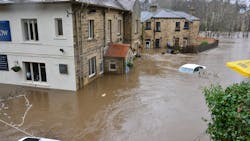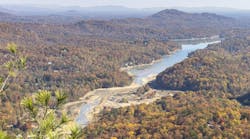Concordia researchers develop new flood mapping model
The widespread flooding that submerged parts of the province’s most densely populated regions in 2017 and 2019 exposed important gaps in Quebec’s flood preparedness regime. With thousands of people displaced and hundreds of millions of dollars worth of damages incurred, the disasters spurred urgent re-investment in the aging system.
A new paper led by Concordia University researchers outlines how advanced technology and recently available data is helping in advanced flood mapping.
The article is published in the journal Hydrological Processes. In it, the authors present a new methodology to create a watershed-scale flood model based on light detection and ranging (LiDAR) data.
LiDAR uses aircraft-mounted pulsed lasers to measure ranges on the Earth’s surface. The data it collects can be used to render extraordinarily precise representations of local topography, which can be immensely valuable to natural-resource industries, geographers and other researchers, including public safety authorities and insurers. In this case, the data was gathered by the Quebec Ministry of Forests, Wildlife and Parks for the benefit of Quebec’s large forestry industry. The data is publicly available on the Forêt ouverte website.
Calculated risks
Most large-scale mapping of flood hazard areas relies on satellite data, which provided roughly 30-metre grid resolution models. LiDAR offers a one-meter grid resolution. At this level, it can provide elevation readings that are accurate within 15 to 20 centimeters.
While LiDAR cannot penetrate surface water, it can deliver a precise water surface reading that is dated and time-stamped. In their model, the researchers couple this information with river discharge data provided by the Ministry of Environment and Fight Against Climate Change to calculate the riverbed’s depth.
This system, say the researchers, is just as applicable to large rivers like the Gatineau or Chaudière as it is to smaller ones down to a width of around 10 metres. The authors liken the model to a catalogue that officials can refer to when looking to predict possible flood level extent of events given a particular set of circumstances.
This project is part of Projet INFO-Crue, a Quebec government program to update flood maps in 50 key watersheds that became an urgent priority following the recent series of floods.


